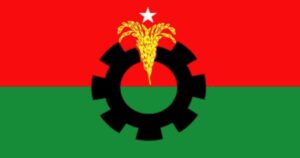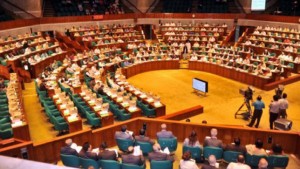Geneva, 3 Aug (Kanaga Raja) – Some 830 million young people, representing more than 80 per cent of the youth population (aged 15-24 years), are online in 104 countries, according to new data released by the International Telecommunication Union (ITU).In its ICT Facts and Figures 2017 released this week, ITU said that out of the 830 million young people who are online, 320 million (39%) alone are in China and India.
The proportion of young people aged 15-24 using the Internet (71%) is significantly higher than the proportion of the total population using the Internet (48%).
“ITU’s ICT Facts and Figures 2017 shows that great strides are being made in expanding internet access through the increased availability of broadband networks. Digital connectivity plays a critical role in bettering lives, as it opens the door to unprecedented knowledge, employment and financial opportunities for billions of people worldwide,” said ITU Secretary-General Houlin Zhao, in a press release.
“ICTs continue to be a key enabler of economic and social development, bridging the digital divide and fostering an inclusive digital economy,” said Brahima Sanou, Director of the ITU Telecommunication Development Bureau.
According to ITU, in developed countries, 94% of young people aged 15-24 use the Internet compared with 67% in developing countries and only 30% in Least Developed Countries (LDCs).
Nearly 9 out of 10 young individuals not using the Internet live in Africa or Asia and the Pacific.
According to the United Nations specialised agency, young people represent almost one-fourth of the total number of individuals using the Internet worldwide.
In LDCs, 35% of the individuals using the Internet are young people aged 15-24, compared with 13% in developed countries and 23% globally.
However, ITU noted that in developed countries, the proportion of households with Internet access at home is twice as high as in developing countries.
Only 15% of households in LDCs have Internet access at home.
In these countries, many Internet users are accessing the Internet from work, schools and universities or from other shared public connections outside the home.
ITU also highlighted the persisting gender gap in the digital economy, pointing out that the proportion of men using the Internet is higher than the proportion of women using the Internet in two-thirds of countries worldwide.
“There is a strong link between gender parity in the enrollment ratio in tertiary education and gender parity in Internet use,” it said.
The only region where a higher percentage of women than men are using the Internet is the Americas, where countries also score highly on gender parity in tertiary education.
According to ITU, the proportion of women using the Internet is 12% lower than the proportion of men using the Internet worldwide. While the gender gap has narrowed in most regions since 2013, it has widened in Africa.
In Africa, the proportion of women using the Internet is 25% lower than the proportion of men using the Internet.
In LDCs, only one out of seven women is using the Internet compared with one out of five men.
In other findings, ITU reported that mobile-broadband subscriptions have grown more than 20% annually in the last five years and are expected to reach 4.3 billion globally by end 2017.
It however noted: “Despite the high growth rates in developing countries and in LDCs, there are twice as many mobile-broadband subscriptions per 100 inhabitants in developed countries as in developing countries, and four times as many in developed countries as in LDCs.”
The global number of fixed-broadband subscriptions has increased by 9% annually in the last five years and 330 million new fixed-broadband subscriptions have been added.
ITU however said that higher growth will be needed to bridge the divide between developed and developing countries: there are 31 fixed broadband subscriptions per 100 inhabitants in developed countries against 9 in developing countries.
“Fixed-broadband uptake remains very limited in LDCs, with only one subscription per 100 inhabitants.”
ITU also found that mobile-broadband prices as a percentage of GNI per capita halved between 2013 and 2016 worldwide.
The steepest decrease occurred in LDCs, where prices fell from 32.4 to 14.1% of GNI per capita.
Mobile broadband is more affordable than fixed-broadband services in most developing countries.
“However, mobile-broadband prices represent more than 5% of GNI per capita in most LDCs and are therefore unaffordable for the large majority of the population.”
In LDCs, said ITU, on average, an entry-level fixed-broadband subscription is 2.6 times more expensive than an entry-level mobile-broadband subscription.
Despite the worldwide increase in high-speed fixed-broadband subscriptions, there remains a lack of high-speed connections in the developing world, with a penetration rate of 6% (1.6% excluding China) compared with 24% in developed countries.
Most of the increase in high-speed fixed-broadband subscriptions in developing countries can be attributed to China, which accounts for 80% of all fixed-broadband subscriptions at 10 Mbit/s or above in developing countries.
ITU noted that developing countries and LDCs are deploying fibre infrastructure directly, leapfrogging cable and DSL.
However, the proportion of fibre broadband subscriptions per 100 inhabitants in developed countries is twice as high as in developing countries, and ten times higher than in LDCs.
ITU also found that international Internet bandwidth grew worldwide by 32% between 2015 and 2016, with Africa experiencing an increase of 72% during this period, the highest of all regions.
Global telecommunication revenues declined by 4% between 2014 and 2015, falling back to USD1.9 trillion.
ITU said developing countries are home to 83% of the global population but generate only 39% of the world’s telecommunication revenues.
Published in SUNS #8516 dated 4 August 2017 – Third World Network




